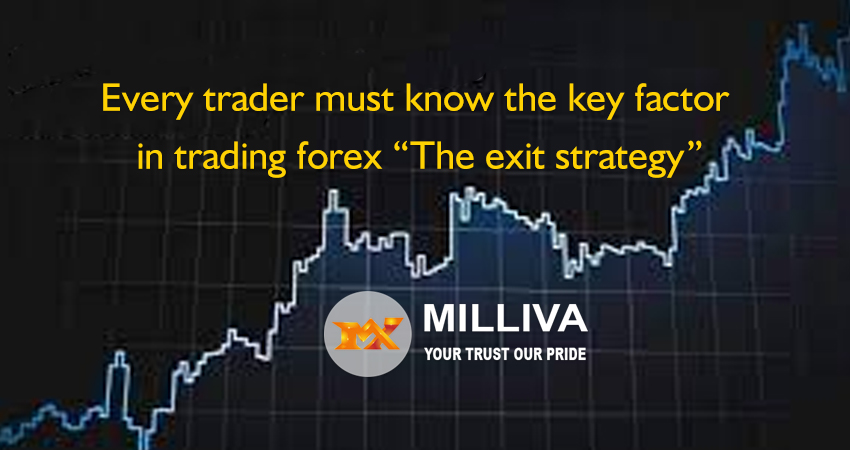Most Important Key Factors in Forex Trading

![]()
Traders spend a lot of time trying to figure out when the best moment is to enter a trade. While this is significant, the location where traders choose to exit transactions ultimately determines. The trade’s success and Key Factor in Forex Trading.
What Is an Exit Strategy?
1.Key Factor in Forex Trading
Exit strategy is a backup plan used by an investor, trader, venture capitalist or business owner to liquidate a stake in a financial asset. If predefined conditions are reached or surpassed. An exit plan can be used to get out of a losing investment or liquidate a losing business. The goal of the exit plan in this scenario is to minimize losses
Why is it Necessary to Have an Exit Strategy ?
To guarantee that you keep to the decisions you’ve set in your trading plan, you’ll need an exit strategy. You’re more prone to make decisions based on emotions like fear and greed if you don’t have a strategy. Which might lead you to grab gains too soon or run your losses too long.
How to Get Out of a Trade
You can only exit a transaction in one of two ways: by incurring a loss or by generating a profit. When discussing exit strategies, the words take-profit and stop-loss orders are used to describe the type of exit being made. Traders will sometimes shorten these phrases as “T/P” and “S/L.”
Stop-Loss Orders (S/L)
2.Key Factor in Forex Trading
Stop-loss orders often known as stop orders that will set with your broker to sell securities at a specific price. The stop-loss will be turned into a market order to sell as soon as this threshold is reached. These might assist you limit your losses if the market turns against you swiftly.
Rules that Stop-Loss Orders Must Follow
Stop-losses are always placed above the current asking price and on a sale. They always set below the current bid price. Once the stock is quoted at the stop-loss price, Nasdaq stop-losses become market orders.
Stop-loss orders on AMEX and NYSE give access to next sale on market if price trades at the stop price.
Stop-Loss Orders Can be Divided into 3 Categories
Good ’til cancelled (GTC) – This sort of order is valid until it is executed or you explicitly cancel it.
The stop-loss on a day order expires after one trading day.
Trailing stop — This stop-loss follows the market price at a defined distance but never moves lower.

Take-Profit (T/P) Orders
3.Key Factor in Forex Trading
Take-profit orders also known as limit orders similar to stop-loss orders in that they are turned into market orders to sell when the target price is met. In terms of execution on the NYSE, Nasdaq and AMEX exchanges, take-profit points follow the same regulations as stop-loss points.
There are Two Distinctions
1. There is no such thing as a “trailing” point. (If you didn’t, you’d never be able to make a profit!)
2.Instead of being put below the current market price, the exit point must be set above it.
Holding
Exits can’t be discussed without mentioning the necessity of a holding time that works well with your trading approach. The magic time frames closely correspond to the overall strategy used to withdraw money from the financial markets
Minutes to Hours in Day Trading
Hours to Days in Swing Trading
Trading Positions: From Days to Weeks
Time to Invest: Weeks to Months
Choose the category that best fits your market strategy, since this will determine how long you have to register your profit or loss. If you don’t stick to the rules you risk converting a trade into an investment or a momentum play into a scalp
This strategy necessitates discipline since certain locations perform so well that you want to maintain them even if you don’t have enough time. While you may adjust a holding time to cater for market changes, staying within boundaries increases confidence, profitability, and trading competence
Timing the Market
4.Key Factor in Forex Trading
Make it a habit to set reward and risk goals before starting any transaction. Examine the chart for the next anticipated resistance level to appear within the time restrictions of your holding period. That’s the point at which you’ll obtain your prize. Then figure out what price will show you incorrect if the security turns and strikes it.
That’s the level of danger you’re looking for. Calculate the reward-to-risk ratio, aiming for at least a 2:1 advantage. Anything less, and you should pass on the transaction in favor of a better one.
Trade Management
Concentrate your trade management efforts on the two most important exit prices. Assume that everything is going well for you and that the increasing price is approaching your reward objective. The price rate of change now plays a role since the sooner it approaches the magic figure, the more options you have for a good exit.
The first alternative is to just walk away at the price, congratulate yourself on the back for a job well done, and move on to the next deal. When the price is firmly going in your favor, it’s a better idea to let it surpass the reward objective and place a protective stop at that level while you try to add to winnings. Then seek for the next obvious obstacle, keeping put as long as your holding period is not violated.
Profit-Protection Technique
Slow advances are more difficult to trade since many equities will approach the reward objective but not reach it. This necessitates a profit-protection technique that kicks in whenever the price has crossed 75% of the gap between your risk and return goals.
Place a trailing stop to safeguard partial winnings, or keep one finger on the exit button while watching the ticker if you’re trading in real-time. The idea is to stay in your position until price action tells you it’s time to exit.
Stop Loss Strategies
Stops must be implemented in such a way that they allow you to exit if a security breaches the technical reason you entered the deal. For traders who have been trained to put stops based on arbitrary parameters such as a 5% drawdown or $1.50 below the entry price, this is a perplexing idea.
Because they aren’t adjusted to the features and volatility of that particular instrument, these placements make no sense. To determine the natural stop-loss price, look for breaches of technical elements like as trend lines, round numbers, and moving averages.
Scaling Exit Strategies
Strategy necessitates discipline since certain locations perform so well that you want to maintain them.While you may adjust a holding time to cater for market changes, staying within boundaries increases confidence profitability
This choice considers the magnitude of the position as well as the strategy being used. For example, breaking a modest deal into even smaller sections makes little sense; instead, it’s better to wait for the best opportunity to dump the entire stake or use the stop-at-reward technique.
Holdings Benefit
Larger holdings benefit from 3-tiered strategy with first 3rd departing at 75% of gap between risk and reward goals and 2nd third exiting at the target.
After third component has exceeded the objective, place a trailing stop behind it and use that level as a rock-bottom escape if the position turns south.
This third element will prove to be a lifesaver over time, typically resulting in a significant profit.
Multi-Tiered Approach
Finally, there is one exception to this multi-tiered approach. It’s our responsibility to select the low-hanging fruit when the market gives out presents.
News shock causes large gap in your direction leave the whole position without regret follow the ancient adage.
In summary, it’s important to remember that forex trading is about more than simply having solid entry. The success of a trade is ultimately determined by where traders leave their positions. Trading plan that incorporates a specific exit strategy to finish off transactions might help new traders gain confidence in trading.
Trading exit techniques are only one component of a comprehensive forex trading strategy. Learn more about our most effective forex trading tactics.

Visit us : www.milliva.com





